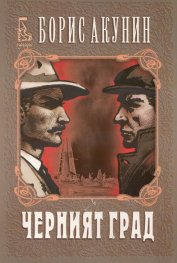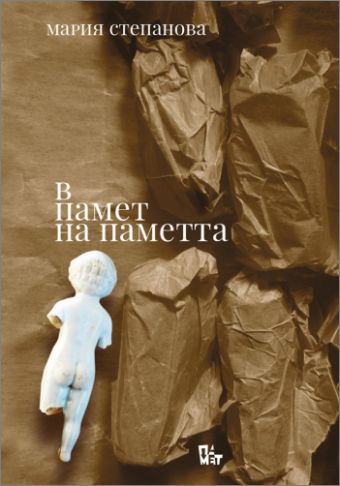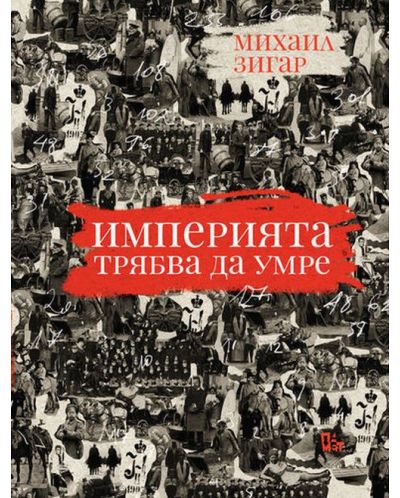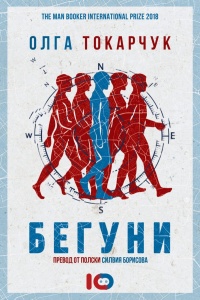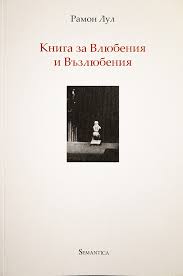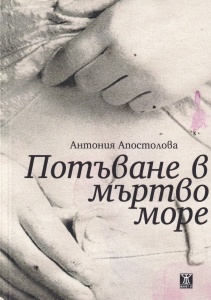Никола Бенин
понеделник, 30 декември 2019 г.
събота, 21 декември 2019 г.
сряда, 18 декември 2019 г.
вторник, 17 декември 2019 г.
Здравен и спортен център Terme Selce
Никола Бенин
Здравен и спортен център Terme Selce, разположен на красивия хърватски бряг на северния Адриатически океан, предлага уникална формула за всеки, който желае да се грижи за здравето си, да се наслаждава на здравето, да подобрява физиката на тялото си или да се възстанови след болест или операция.
Световноизвестните пещери Аджанта (अजिंठा लेणी)
Никола Бенин


Храмовете
са изсечени в скалите в продължение на няколко столетия – от III до VII век.
Най-интензивното строителство е проведено в V век (462 – 483 г.). В това време
са създадени най-съвършените образци на скулптурата и живописта на Аджанта.
В XIII век
будизмът губи своето значение и монасите постепенно напускат манастира. В
резултат пещерите обрасват с растителност и остават скрити. На 28 април 1819
година британският офицер Джон Смит случайно открива входа на пещера. Той
изследва пещерата и оставя името си върху колона заедно с датата, на която я
открива. Макар и избледнял, този надпис може да се види и днес. По онова време
в пещерите живеят само птици и прилепи, но скоро след откритието са разчистени
и възстановени в предишния си вид.
Шимога (SHIMOGA): Град, пропит с богато наследство и култура
Никола Бенин
С природата в разцвета си градът Шимога (Шивамага) в Карнатака е бил дом на няколко велики династии и кралства. Погълнат от богато наследство и култура, този главен град на окръг Шимога получава името си от думите „Шив-Муха“, означаваща „Лицето на Господ Шива“.
Опакована с няколко чудеса на природата под формата на живописен пейзаж, разкошни водопади, мистични храмове и буйни зелени околности, суровата й красота ще ви остави абсолютно омагьосана. Благословено с люлеещи се длани и зелени падища, мястото си е спечелило прякора с оризова купа, както и житницата на Карнатака.
С четири реки, а именно Шаравати, Кумудават, Тунгабхадра и Варада, пробиващи се в града, бучещите и бълбукащи звуци придават мистичен чар на региона. Приятно време, красиви подвижни хълмове, изобилие от арешка ядки и безкраен списък от атракции направиха това място задължително за ентусиазираните създатели на ваканцията.
МЕСТА ЗА ВИЖДАНЕ В ШИМОГА
Dabbe Falls
и гънки на светилището за диви животни в Саравати, е скрит скъпоценен камък в района на Шимога на Карнатака. Примамливият зов на гората и разкошната струя вода, която се втурва надолу по скалата, привличат любители на природата и изследователи към водопада Dabbe.
Думата „dabbe“ се превежда като „стъпки“ на родния език. Причината за такова име е потока на водопада Dabbe, който наподобява стъпала или по-точно, вид тераса, изскачаща от стръмната стена на скалата. Водопадите и басейните във всяка стъпка, преди да се препълнят и образуват каскадна стена с вода до следващата стъпка и това продължава да превръща Dabbe в една от най-живописните сцени, които се наблюдават в региона.
Kodachadri Hills
Хълмовете Кодачадри служат като зашеметяващ фон на вечнозелени гори към град Мараванте. Разположени в Западните Гати на височина от 4111 фута над морското равнище, те също се оказват една от добрите трекинг пътеки, започвайки от гората Южна Канара.
Начинаещите или преходните новобранци могат лесно да предприемат този поход. Тъй като по-голямата част от експедицията обхваща горски пейзаж на ниска надморска височина, шансовете за надморска болест също са ниски. Общото разстояние е 14 км отпред.
Jog Falls
С обща височина на падане 253 м, Джог Фолс е сред най-високите водопади в Индия и вероятно един от най-величествените по целия свят.
Agumbe
Разположен в квартал Шимога на Карнатака, Агумбе е малко селце, често наричано „Черрапунджи от Южна Индия“. Този богат на биоразнообразие регион има най-много валежи в Южна Индия и вторият най-висок годишен валеж в Индия. Посещението на Agumbe е обогатяващо изживяване, тъй като тази станция на хълма има живописна красота, съчетана с пешеходни пътеки и бликащи валежи. Това е една от последните оцелели низински дъждовни гори. Това красиво място послужи като настройка за много известния измислен град Малгуди в Индия в телевизионния сериал „Малгуди дни“. Агумбе е известен с спиращите дъха залези над Арабско море, които могат да бъдат свидетели от този регион.
Интересното е, че Агумбе е наричан още „столицата на кобрата“ поради големия брой кобри, открити тук. Туристи от всички краища се стичат до това хипнотизиращо място, за да изпитат спокойствие. Agumbe предлага страхотни възможности за походи, призоваващи ентусиастите на приключенията да посетят тази страхотна дестинация, скрита в скута на природата.
Светилище на птиците Мандагаде
Светилището Mandagadde Bird е малък живописен остров на река Тунга, близо 32 км от град Шимога, на път за Тиртхахали.
Идеалното време за опознаване на острова, който е част от светилището за диви животни на Шетихали, е от юли до октомври, през който островът се посещава от множество мигриращи птици като дартър, егрет, змийска птица, корморан и др.
НАЙ-ДОБРОТО ВРЕМЕ ЗА ПОСЛЕДЕНИЕ
Зимните месеци от октомври до февруари са най-доброто време за посещение на Шимога, тъй като красотата на мястото е подсилена с приятното време. С въртящи се сезони град Шимога се люлее между сухо и мокро. Сезонът на мусоните удря градчето някъде между юни и октомври и превръща мястото в рай, всичко освежено и цъфтящо. Реките и водопадите извират с пълна сила и представляват красива гледка.
КАК ДА ДОСТАВИМ ШИМОГА
По полет: Най-близкото международно летище е летище Мангалор, Мангалор, приблизително на 195 км от град Шимога. Честите полети до различни национални и международни дестинации като Хайдерабад, Абу Даби, Бахрейн, Кожикоде, Бангалор и Ченай излитат от тук. Можете да наемете такси от летището, за да стигнете до главния град.
По шосе: Можете да вземете автобус от основните градове и в Карнатака, и в Махаращра, за да стигнете до Шимога. По този маршрут пътуват много автобуси на държавния транспорт. Най-доброто нещо, което трябва да направите, за да разгледате Шимога, е да наемете кола. Можете да използвате същата кола, за да разгледате град Шимога. Можете да наемете автомобил от различни компании, които ще ви таксуват от колата, която сте наели, броя на дните и изминатите километри.
С влак: Със собствена жп гара квартал Шимога е добре свързан с много големи градове в страната. Редовната железопътна услуга също свързва региона с Бенгалуру директно, който е на 280 км. Използвайте автобус или такси извън гарата, за да пътувате навсякъде в района.
The curious case of Gaius Rabirius
Publiation: Nikola Benin
1. Introduction
In 63 BCE, a trial took place in Ancient Rome which is still shrouded in mystery. Even in its own time it was extraordinary and controversial, not least because of the strange charges brought against the accused, the prosecutor’s motives, the alleged bias of the judges and the utterly absurd conclusion. The trial I am writing about is the trial against Gaius Rabirius, an elderly and nondescript senator from an undistinguished family. He was brought to trial by people’s tribune Titus Labienus and had to appear before two judges, Gaius Julius Caesar and his distant cousin Lucius. Rabirius was accused of murders that had been committed 37 years ago. Apart from the huge interval between the murders and the trial, the charge was quite exceptional. Rabirius was not simply accused of murder: the charge was perduellio, or high treason. In this essay, I will attempt to describe the trial in its legal, historical and political context. This is not easy, as our available historical sources contain scant details about the trial itself, about the motives of both the prosecutor and the judges and about the crime of perduellio. The essay will therefore inevitably at times be somewhat speculative.
2. The murder of Saturninus
Lucius Appuleius Saturninus was an influential people’s tribune in the final years of the second century BCE. The office of people’s tribune (tribunus plebis) had a long history. According to tradition it had been created in the year 494 BCE when the class struggle between the then nobility, the patricians, and the common people, the plebs, reached a dramatic climax and led to an exodus of the latter to the Mons Sacer outside Rome.[1] After several attempts at reconciliation, a peace was made, and to safeguard the rights of the plebs against the nobility, the office of people’s tribune was introduced. Tribunes could only be elected from the plebs. They were sacrosanctus, inviolable. This meant that not only could they not be brought to trial, it also entailed that the use of any form of coercion (coercitio) against them was strictly prohibited.
The tribunes could use their inviolability to arrest magistrates and throw them in prison, for instance to protect citizens whose rights were threatened by the use of force by magistrates. Furthermore, tribunes could block any bill or Senate decision with a veto (the power of intercessio). Since they were supposed to be available to provide aid (auxilium) to citizens in need at any time of the day, a convention dictated that the doors of their houses had to be open at all times. During the day, the tribunes had an office at the Forum Romanum, close to the Senate House (Curia) and the comitium, the place where the popular assembly often met. A final important power of the tribunes was the power to table bills in this assembly.[2]
Because of his inviolability, his power to introduce draft legislation and his right of veto, a people’s tribune was a powerful player in Roman politics. However, his power was curbed by two factors: like most other Roman magistrates, he held his office for a single year only and there were ten people’s tribunes in total, who could also veto each other’s actions. Not all people’s tribunes went to great lengths to serve the interests of the common people, and that is probably an understatement.[3] The fact that tribunes could block actions by other tribunes led to members of the conservative aristocracy trying to get their ‘own’ moderate tribunes elected to keep a close eye on the plans of their more activist colleagues. In time, serving a term as people’s tribune became a normal step in the political career of young men from distinguished plebeian families.
These families had managed to become part of the Roman aristocracy, which had originally been exclusively patrician. But as more and more offices were opened to plebeians as well – the consulship for example – the nature of the aristocracy gradually changed. A new aristocracy emerged, comprising both patrician and plebeian families. Intermarriage was common, and often the interests of this new and mixed Roman nobility (the nobilitas) were at odds with those of the non-aristocratic plebs. So to sum up, in the Late Republic there were tribunes in all shapes and sizes. There were the strawmen of the elite, there were young noblemen who had just started their political career, there were benefactors and idealists and there were men who combined elements of all three. However, there was one thing all these tribunes had in common: they held their office for many reasons, but always to serve their own interests and those of their families as well.
The aforementioned Saturninus is best known for his cooperation with the controversial statesman and general Gaius Marius (157-86).[4] Support from Saturninus had helped Marius in winning some of his seven consulships, as well as securing land for his veteran soldiers. However, things went badly wrong in 100 BCE. First, Saturninus and his sidekick, a praetor named Glaucia, were implicated in two political murders in Rome. Then the tribune tabled a land reform bill (lex agraria) in the popular assembly. The bill involved redistributing land among Rome’s poor citizens. Bills like this were common in the Late Republic, and they were hugely unpopular among the city’s conservative nobility. Saturninus’ bill was special in that it contained a rider (sanctio), or a clause obliging members of the Senate to swear an oath that they would abide by the law. If they refused to do so, they would be removed from the Senate and forced to pay a heavy fine. One influential senator who refused to swear the required oath chose to go into exile instead.[5] Plutarchus claims that Saturninus’ insolence now completely got out of hand. The consul Marius was not pleased with his political ally’s behaviour, but he was either powerless or did not have the courage to call him to order. When representatives of the Senate came to him to ask for his help, Marius even – in Plutarchus’ version – feigned a bad case of diarrhoea.
The Senate now clearly had enough of the tribune. A motion (senatus consultum) was passed, charging all the magistrates – save of course Saturninus and Glaucia – to defend the res publica. The motion was especially directed at the two consuls, the highest magistrates in the Roman Republic. Marius was now compelled to openly break with Saturninus. The consul advanced on the Forum with armed soldiers, whereupon Saturninus and his supporters entrenched themselves on the Capitoline Hill (at the western end of the Forum). Marius then proceeded to cut off the rebels’ water supply, forcing them to surrender. The captives were led to the Senate House at the foot of the hill, where they were stoned to death by furious supporters of the Senate. Some of these had even climbed onto the roof of the Curia to pelt the prisoners with tiles. Almost instantly, a discussion was ignited about whether these killings had been both lawful and justified. Had not the rebels been promised safe conduct? Did not the murder of a sacrosanct tribune – Saturninus had been re-elected and had been killed on the very day he started his new term of office[6] – constitute sacrilege? And what exactly was the (legal) value of the senatus consultum that had charged the magistrates to defend the Republic? These very same questions would be asked again 37 years later.
3. The charge of perduellio

Coin of Saturninus (source: Classical Numismatic Group, Inc.; CC BY-SA 3.0 license)
One of the instigators of the trial against Rabirius can be identified with certainty. His name was Titus Labienus, and he must have been in his mid-thirties during the trial. Labienus was people’s tribune at the time and would have been about the same age as the illustrious Gaius Julius Caesar (100-44 BCE), who himself would play an important, though badly documented role in the trial. Labienus had probably not even been born yet when Saturninus, Glaucia and their supporters had been massacred. Nevertheless, the tribune did have some reason to press charges, for among the victims had been one Quintus Labienus, the tribune’s uncle. And although it is extremely unlikely that he had ever known this uncle[7], it cannot be considered altogether surprising that Labienus decided to press charges against the cutthroats who had killed a relative. In the Late Republic, tribunes often acted as prosecutors in trials that were politically sensitive and taking revenge for the killing of relatives was part and parcel of the central place of family in Roman political life. However, vengeance cannot have been Labienus’ only motive. I will get back to this later.
So while we can, in a way, produce an explanation for Labienus’ legal actions, this is much harder for two other aspects of the case. In the first place, it is not clear why only Rabirius was targeted. He was charged with complicity in the murders, but is seems rather unlikely that he was the last surviving suspect. Rabirius furthermore denied any involvement in the killings, and it would have been very difficult to find witnesses of the lynching after so many years. Perhaps this elderly and not very influential senator served as an ideal scapegoat. Rabirius’ family was undistinguished and he himself had presumably never held any senior offices.[8] A conviction of such a nondescript individual would not have led to serious political repercussions.

The Capitoline Wolf with the twins Romulus and Remus. Romulus is traditionally considered the first King of Rome.
The charges brought against Rabirius were, however, extraordinary. The suspect was not accused of murder, but of high treason. Roman law knew a fairly common form of treason which was called laesa maiestas, sometimes abbreviated as maiestas and even known today as lèse majesté in some legal systems. The ‘majesty’ that had been violated was in this case not that of the monarch – the Romans had traditionally abolished the monarchy over 400 years previously – but that of the Roman people. In cases of maiestas, the Romans employed a modern criminal procedure, which may even have been introduced by Saturninus himself.[9] The suspect was tried before a quaestio, a court presided over by a praetor.[10] While the praetor formally led the trial and made sure proper procedure was followed, it was a jury that – by simple majority – decided whether the suspect was guilty or not.[11]
Labienus, however, chose to charge Rabirius with the crime of perduellio, an offense with ancient origins which had been all but forgotten in his own days. Perduellio was also a form of high treason against the State. According to tradition, it had already been created when Rome was still ruled by kings (753-509 BCE). The difference between maiestas and perduellio is not clear, but presumably the latter was a much more serious form of treason: perduellio was inevitably punished by death, while lighter punishments and exile were possibilities in cases of maiestas.
The trial against Rabirius is the only case of perduellio that can be considered historical with certainty. Stories about other cases are mentioned in our sources, but most of these are set in the Regal period or in the Early Republic, eras in which the Romans had not yet started to write down their own history. If these stories were not completely made up, they were most definitely distorted, rewritten and complemented by later historians. However, even a bad source is better than no source at all. The Roman historian Livius (59 BCE-17 CE) lived in the first century BCE and wrote about one certain[12] and two possible cases of perduellio from Rome’s early years. He also mentions two possible cases of perduellio from the Mid-Republic. Livius wrote his Ab urbe condita just a few decades after Rabirius’ trial and almost certainly had intimate knowledge of it.[13] It is quite possible that he used this knowledge to colour the ancient stories about perduellio. Therefore it is worth reflecting on these stories, as they might contribute to our understanding of the trial against Rabirius.
4. The mythical origins of the crime of perduellio

Battle between the Horatii and Curiatii. Fresco by Giuseppe Cesari, the Cavalier d’Arpino (1568-1640).
The most detailed description of a perduellio trial can be found in Book 1 of Livius’ work. The trial is set during the reign of Rome’s third king Tullus Hostilius (ca. 673-641 BCE).[14] Tullus had just gone to war with neighbouring Alba Longa. To avoid unnecessary bloodshed, both army commanders had agreed to settle the conflict by having three Romans, the brothers Horatius, fight against three Albans, the brothers Curiatius. Whoever won this battle would win the war. Even though his two brothers were killed, the Roman Publius Horatius managed to strike down all of three of his opponents, winning the war for Rome. The city rejoiced and Horatius was given a warm welcome upon his return. But his sister Horatia was in tears: one of the Curiatii had been her fiancé and he was now dead. Horatia’s grief greatly angered Horatius. After all, Curiatius had been an enemy and he had been responsible for the death of two of her brothers. In the end, Horatius took his sword and killed his sister.
After this atrocity, Horatius was dragged before the king. Tullus now faced a dilemma. On the one hand, Horatius had committed a heinous crime, but on the other, his services to the kingdom were immense. The king decided to convene the popular assembly. He also appointed two men – the duumviri – to judge the high treason committed by Horatius according to a law presumably promulgated by the king himself.[15] Livius calls this law a lex horrendi carminis, a term which is difficult to translate – the word carmen means ‘song’ or ‘incantation’ – but which seems to indicate that the substance of the law was rather horrible. Livius then goes on to quote the text of the law in full:
“The dreadful language of the law was: “The duumvirs (duumviri) shall judge cases of treason (perduellio); if the accused appeal from the duumvirs, the appeal (provocatio) shall be heard; if their sentence be confirmed, the lictor shall hang him by a rope on the fatal tree (arbor infelix[16]), and shall scourge him either within or without the pomoerium (the ritual boundaries of the city).” The duumvirs appointed under this law did not think that by its provisions they had the power to acquit even an innocent person. Accordingly they condemned him; then one of them said: “Publius Horatius, I pronounce you guilty of treason. Lictor, bind his hands.” The lictor had approached and was fastening the cord, when Horatius, at the suggestion of Tullus, who placed a merciful interpretation on the law, said, “I appeal.” The appeal was accordingly brought before the people.” (Translator: Rev. Canon Roberts, 1905).
So the duumviri believed that their only option was to condemn Horatius, which they did. Horatius then appealed to the people (i.e. the popular assembly) and this appeal was successful. Horatius’ bravery in battle and the intervention of his father – “who declared that his daughter had been justly slain; had it not been so, he would have exerted his authority as a father in punishing his son” – secured his acquittal.
The description of Horatius’ trial is notable for the use of (legal) terms which were also used in the trial against Rabirius. I specifically refer to the duumviri perduellionis and the rather puzzling term arbor infelix, the ‘unhappy tree’ from which the condemned man was supposed to be hung. Also of importance is the term provocatio. In Republican Rome, the right of provocatio was an important legal safeguard for Roman citizens. It ensured that, if threatened by the exercise of power (coercitio) by a magistrate, these citizens could appeal to the people. The people’s tribunes played an important role in the exercise of this right: by using their sacrosanctity, they offered de facto protection to the citizens involved. The use of the term provocatio in the case of Publius Horatius is almost certainly anachronistic. Although our sources mention laws on provocatio for the years 509 and 449 BCE[17], it is much more likely that this safeguard was only – fully – introduced in a Lex Valeria of 300 BCE.[18] On a side note, the right of provocatio could be set aside by a separate law. This was presumably the case with the quaestiones, the courts mentioned above. An appeal to the people was not possible there.
The story of Publius Horatius is very unreliable, but the other cases of perduellio mentioned by Livius are even more dubious. First there is the case of Spurius Cassius, the consul of 486 BCE. He was said to have introduced a bill – a lex agraria – on the distribution of land among poor plebeians and Rome’s Latin allies.[19] The consul was accused of using this bill and the subsequent grants of land to buy himself a throne. Aspiring a so-called regnum – i.e. aspiring to become king – was an act punishable by death in the young Roman Republic. Livius claims that, as soon as the consul’s term of office expired and his immunity lapsed, Spurius Cassius was condemned and executed. One tradition mentioned by the historian argues that the charge had been perduellio and that after the execution, the former consul’s house was razed to the ground. Livius’ discussion of the trial is both summary and confusing, if only because he mentions the involvement of two quaestors instead of the duumviri one would expect.[20]
The second possible case of perduellio, again from the Early Republic, is the story of Marcus Manlius, nicknamed Capitolinus.[21] Manlius had won much fame in 390 or 387 BCE by defending the Capitoline Hill against a band of Celts that had annihilated a Roman army and had captured the city itself. A few years later, he became a champion of the common people. Manlius especially opposed the laws on debts and debt bondage. His actions made him most unpopular with the Roman establishment. Manlius was seen as a threat and subsequently accused of aspiring a regnum. In one of the traditions mentioned by Livius, he was condemned by the duumviri and thrown from the Tarpeian Rock. This was a most tragic fate for a former hero: the Tarpeian Rock is part of the Capitoline Hill, which Manlius had defended so courageously. The arbor infelix is not mentioned at all in this tradition.
The third case involved the former praetor Gnaeus Fulvius Flaccus, who had suffered a severe defeat against the Carthaginian general Hannibal in 212 BCE. Flaccus had fled the battlefield while his men were being slaughtered, and this cowardly behaviour was the reason for a tribune to bring him to trial the next year. Although Livius claims that the charge was perduellio, it does not seem to have been a proper perduellio case. No duumviri or fatal tree are ever mentioned, and Flaccus was allowed to go into exile.
The final case was set in the year 169 BCE. The censors Gaius Claudius Pulcher and Tiberius Sempronius Gracchus had quarelled with a group of equites, who were supported by a people’s tribune. The censor Pulcher had asked for the floor during a heated debate in the popular assembly, and the tribune had interpreted this action as an attempt to take the presidency of the assembly away from him. Apparently this amounted to perduellio, at least according to the tribune, and perhaps according to Livius, who again uses the term. But once again, the duumviri and the fatal tree are absent. Although the comitia centuriata (assembly of the centuries; see below) was apparently involved – which would be correct for a perduellio case – it still seems a bit risky to see the case against the censors as a genuine example of perduellio. Pulcher was, by the way, acquitted, and the charges against Gracchus were dropped.
5. The trial against Rabirius
The trial against Rabirius has to be reconstructed using sources that only give summary accounts of it. The sources we have are the works of two Roman historians, Suetonius (ca. 70-130) and Cassius Dio (ca. 155-after 229).[22] Both Suetonius and Dio wrote long after the trial and dedicate only a few lines to it. It is therefore of the utmost importance that we still have the text, almost complete, of the defence speech held by Rabirius’ lawyer. This lawyer was none other than the great orator Marcus Tullius Cicero (106-43 BCE), who happened to be consul as well at the time of the trial. From Cicero’s speech, we can furthermore deduce that Rabirius received aid from Quintus Hortensius, another famous orator and an important lawyer.[23] Cicero’s text provides us with unique insight into the trial, but we should always keep in mind that, being the accused’s lawyer, his aim was never to describe every aspect of the trial as objectively as possible. Apart from that, he was not writing his speech as a historian. The conclusion must therefore be that not even Cicero’s Pro Rabirio can fully answer all of our questions as regards the trial of Rabirius. The remainder of this essay is therefore necessarily based on much speculation and many of my assumptions can be challenged.
Above, the driving force behind the prosecution of Rabirius has already been identified as Titus Labienus. Suetonius describes him as Julius Caesar’s strawman and it is certainly possible that both men were involved in formulating the charges. However, there is no direct evidence for this assumption, only circumstantial clues. Labienus and Caesar had both served under Publius Servilius Vatia Isauricus, the Roman governor of Asia, so would have been fairly well-acquainted. [24] Labienus would later serve as one of Caesar’s most capable legates (legatus pro praetore) during his Gallic War and in his famous Commentaries, Caesar mentions him much more often than his other commanders. The two men furthermore shared certain political ideas, which I will discuss below. Nevertheless, it is telling that Cicero does not even once mention the name of Caesar in his defence speech. The only target of his speech was Labienus.
If we accept that Caesar and Labienus collaborated, then it is most suspect that Caesar himself was appointed as one of the two duumviri, with his distant cousin Lucius Julius Caesar (the consul of 64 BCE) being the second. There are certainly sources that claim that Caesar’s appointment as duumvir was illegal. Cassius Dio asserts that the duumviri were supposed to be elected by the people, and not nominated by a praetor, as supposedly had happened in the trial against Rabirius.[25] Dio’s claim is, however, problematic and hardly convincing. A person convicted by the duumviri could appeal to the people (see below), so it does not seem logical to have the people first elect judges and then allow an appeal against their decision to be brought before that very same people. It is probably better to accept Suetonius’ account, who states that a praetor drew lots for the appointment of the duumviri.[26] Of course the process of drawing lots could be rigged, and one may certainly speculate whether this happened in the case of Rabirius.
Caesar and his cousin declared Rabirius guilty of perduellio. Most likely it had not even been an adversarial trial and perhaps even the term ‘trial’ is a misnomer.[27] We do not know whether the duumviri based their verdict on a statute or acted on the basis of archaic customary law. In any case, Livius’ lex horrendi carminis (see above) – which may or may not be historical – is not mentioned at all in any of the sources, and not even in Cicero’s speech. This speech does make clear which punishment awaited the condemned man: just like in the story of Publius Horatius, his hands would be bound, his head would be covered and he would be hung from an arbor infelix.[28] Cicero likely referred to the penalty of crucifixion, for he frequently uses the word crux in his speech. Crux is the Latin word for a cross composed of a stake with a cross-bar (patibulum) to which convicted criminals were tied or nailed. Crucifixion was a very uncommon form of punishment for Roman citizens. The penalty was usually only applied to non-Romans and slaves.[29] The words “cover his head—hang him to the ill-omened tree” had, according to Cicero, “long since been buried in the darkness of antiquity, and have been overwhelmed by the light of liberty”.[30]

Some of the equipment of a soldier in the triarii, the oldest and most experienced soldiers in Early and Mid-Republican legions.
Suetonius claims that Caesar was manifestly pleased to condemn Rabirius.[31] But there was still hope for the condemned man. The legislation on provocatio – already mentioned above – allowed him to appeal to the Roman people, more specifically to the popular assembly. The assembly was a complex institution. It could meet in several different forms. The two most common assemblies were the comitia centuriata (assembly of the centuries) and the comitia tributa (assembly of the tribus or ‘tribes’).[32] According to tradition, the comitia centuriata had been created during the reign of Rome’s sixth king, Servius Tullius (ca. 578-534 BCE).[33] The Roman population was divided into five property classes (called classes), plus two more classes of people who possessed either much, much more or simply nothing at all, the equites (‘knights’) and capite censi respectively. These classes were subdivided into 193 units known as centuriae. Enrolling citizens into these centuries was the task of the censors, elected magistrates who were charged with estimating the value of a citizen’s property.
Originally, the comitia centuriata was a body with a distinctly military nature, as is evident from many of its characteristics. This assembly met on the field of the war god Mars (the Campus Martius)[34], was sometimes called ‘the army’ (exercitus) and had separate centuries for carpenters, horn blowers and trumpeters, who formed important units within the army. Furthermore, a unit in the Roman army of some 60-80 soldiers was also called a century. Originally, the term centuria had been closely related to the Latin word for a hundred (centum), but this connection had eventually become very loose. This was true for the army, but even more for the comitia centuriata. The individual centuriae comprised hundreds or thousands of male citizens, and at the time of the trial against Rabirius, the highest property class and the equites together controlled 88 of the 193 centuries, which was just short of a majority.[35] The dispossessed, on the other hand – the capite censi, who were counted by their heads rather than their property – were lumped together in a single century.
From this discussion of the comitia centuriata, it should become clear that it was dominated by the wealthiest citizens. This is not as unfair as it seems, at least not historically. Giving the wealthiest citizens more political influence can be explained by the fact that those whose possessed most originally carried the largest military burdens. They had most to lose in a war and had the financial means to equip themselves with weapons and armour. In the Early Republican army, each soldier was required to bring his own sword, shield, spear, helmet, greaves and protective gear (a coat of mail for instance, or a cuirass). This equipment was not provided by the State. As a result, the early legions were mostly made up of wealthier citizens who could afford the full panoply of a hoplite. The fact that their military duties were heavier and more financially burdensome justified giving these citizens greater political influence, at least in the Early Republic.
However, the nature of Rome’s armies had changed dramatically by the time the trial against Rabirius took place. The Roman army had originally been a – highly professional – citizen militia or conscript army. This was no longer true in 63 BCE. Soldiers were now chiefly recruited from the lowest social classes, from a pool of men who possessed next to nothing and whose choice for the army ensured them a steady income and adventures abroad.[36] The State provided these men with arms and armour. Young men from the highest property classes now only served on staff functions or as junior commanders. In 63 BCE, the wealthiest citizens no longer had the greatest military obligations, far from that. But apparently the conservative Roman society still felt a need for a slightly archaic institution like the comitia centuriata, in which merit, wealth and also age[37] played a dominant role. The importance of the comitia centuriata lay especially in the election of the most senior magistrates: the praetors, consuls and censors. Sporadically this assembly was involved in other affairs as well, and one such example is dealing with appeals in cases of perduellio, as is demonstrated by the case of Rabirius.[38] So we have an old case, pertaining to an ancient crime of almost mythical origins, discussed before an institution dating back to the days of the Roman kings. That is the curious case of Gaius Rabirius in a nutshell.
In the comitia centuriata, each century voted in turn, with the centuries of the higher property classes voting first and the results being declared after each century had voted. If a majority of 97 out of 193 centuries had been reached, the voting simply stopped and a candidate was declared elected, a proposal adopted or an appeal granted or rejected.[39] According to our sources, Rabirius’ appeal would surely have been rejected and his previous conviction confirmed[40], had not a strange incident taken place. The praetor Quintus Caecilius Metellus Celer, whose role in the trial is not at all clear[41], apparently tried to convince the assembly that the trial was in violation of certain customs, but the precise nature of this violation is not elucidated in our sources. No one listened to his warnings, so even before the voting procedure in the assembly started, Metellus Celer ran[42] to the Janiculum, a hill on the other side of the Tiber. There he lowered the military flag (vexillum) which was supposed to be up during the entire meeting of the comitia centuriata.

Rome’s city walls. In white/grey are the so-called Servian walls from the fourth century BCE. In brown are the third century CE Aurelian walls.
The raising and lowering of the vexillum was an ancient ritual which is explained by the military nature of the comitia centuriata. The Campus Martius was originally a field outside the city of Rome and in the Late Republic it was still outside the city walls. If the popular assembly met there, the city was for a while undefended and therefore vulnerable. In the Regal period and the Early Republic, Rome was still surrounded by enemies. Citizens were therefore required to assemble for the comitia centuriata carrying their arms and armour with them. Guards were stationed on the Janiculum to look out for approaching enemy armies and prevent them from occupying the hill and threatening the city from there. The assembly could vote and take decisions as long as the flag was up and waving in the wind. But if it was lowered, this was a signal that an enemy army was approaching and that the city itself was in danger. Lowering the flag automatically caused the assembly to be disbanded. This archaic rule was upheld even in 63 BCE during the trial against Rabirius. Metellus Celer’s intervention ended the trial for good. Although Labienus could have chosen to press new charges, he decided not to. [43]
6. Trial and motives
The trial against Gaius Rabirius raises many questions, most of which cannot be answered satisfactorily. If Labienus and Caesar indeed collaborated, what were their motives to get Rabirius convicted? As stated above, an uncle of Labienus had been killed when Saturninus and his supporters were massacred, but even in a society that highly valued family bonds this seems like a rather unconvincing motive. Furthermore, it can certainly not have been Caesar’s motive. Caesar was a nephew of Gaius Marius, the same Marius who had led armed troops against Saturninus and was therefore partly to blame for his death.[44] In any case Caesar’s alleged partiality as a duumvir can be questioned. Suetonius may claim that “when Rabirius appealed to the people, nothing was so much in his favour as the bitter hostility of his judge”[45], but none of this is ever mentioned in Cicero’s defence speech, which is telling. In this speech, the orator only attacks Labienus. Of course this makes sense, as Labienus was the prosecutor in the trial, making him Cicero’s formal opponent in the proceedings before the comitia centuriata. It is not impossible that Rabirius’ other lawyer, the aforementioned Quintus Hortensius, raised the issue of Caesar’s alleged bias[46], but we just cannot know for certain.
In trying to clarify the motives of those involved, I will assume that both Labienus and, in his wake, Caesar had a politically motivated interest in securing a conviction of Rabirius in a trial before the people. It is important to note that Rome’s political landscape was highly polarised in the first century BCE. In Ancient Rome, there were no political parties in the modern sense of the word. Roman politics were predominantly candidate-centred and revolved around individual politicians, their relatives and clients and alliances between individuals and families which often had a strong ad hoc character.[47] Nevertheless, it is still possible to differentiate between loose groups of politicians who more or less shared the same ideas and ideals. In the Late Republic, populares were pitted against optimates. The former stood up for the interests of the common people. They introduced bills for agrarian laws, on secret ballots and on the regulation of Rome’s grain dole. They used tribunes to defend traditional Roman rights and liberties and make sure that laws on provocatio were respected. One common characteristic of all populares was their willingness to bypass discussion in the Senate and to directly use the popular assembly to have new laws adopted. There could be no doubt that this behaviour was legal, but it certainly broke with customs and tradition. By contrast, the optimates were those who opposed most or all of the things mentioned above. They were the conservatives who wanted to maintain the status quo.
It is reasonable to assume that, at the time of the trial against Rabirius, the Senate was mostly made up of conservative senators. This was the result of constitutional reforms initiated by the dictator Sulla (138-78 BCE). In 81 BCE, Sulla had basically rewritten the constitution of the Republic. The power of the Senate had been enlarged at the expense of that of the popular assembly and of the people’s tribunes. While the number of senators had almost been doubled to some 500-600 members with the addition of 300 of Sulla’s supporters, and the influence of senators in the courts had been strengthened, the tribuneship had been crippled. Tribunes were no longer allowed to table bills or initiate prosecutions, nor to run for other offices after their term of office expired. This made the office of people’s tribune very unattractive. Since senators were enrolled for life, it is very likely that in 63 BCE many of Sulla’s supporters were still active in the Senate and that the conservatives held a majority of the seats.
Not long after Sulla’s death in 78 BCE, most of his reforms were reversed. A Lex Aurelia, adopted in 75 BCE, stipulated that tribunes were once again allowed to run for other, higher offices. Five years later, another Lex Aurelia annulled Sulla’s reform of the courts and diminished the influence of senators in juries. Tribunes were furthermore allowed to table bills again. It would be wrong to see these developments as a power struggle between ‘the Senate’ and ‘the people’. It was rather a power struggle within the Roman aristocracy and within the Senate, with progressive senators using the popular assembly to realise their plans and more conservative colleagues trying to prevent just that. Above, I have already discussed the role that people’s tribunes of various background played in this struggle, and both populares and conservatives used them.
Caesar and Labienus were undoubtedly populares. From an early age, Caesar had been influenced by their ideology (if in fact it can be called an ideology). After all, he was Gaius Marius’ nephew, and Marius was Sulla’s most formidable opponent.[48] In addition, Caesar was connected to the gens Aurelia through his mother Aurelia, and it was members of the gens Aurelia who were responsible for the aforementioned Leges Aureliae that undid most of Sulla’s conservative legislation. As stated above, the populares frequently used the popular assembly to achieve their goals. In a way, the trial against Rabirius can be seen as a test to determine the relationship and especially the hierarchy between decisions of the popular assembly and those of the Senate. What was at stake here was the precise (legal) effect of a special kind of Senate decision, the senatus consultum de re publica defendenda, which is perhaps better known as the senatus consultum ultimum, the ‘ultimate decree’ (although strictly speaking that term is not correct).
The senatus consultum de re publica defendenda was an instrument of the Senate which had first been used in 121 BCE.[49] In that year, the Senate had judged the activities of the former tribune Gaius Sempronius Gracchus to be a danger to the Republic and had charged the consul Opimius and the other magistrates to take all measures necessary to avert this danger. Opimius had taken up arms and in the ensuing violence, Gracchus and some 3.000 of his supporters had been killed.[50] Under normal circumstances, the killing of Roman citizens without a trial and either the verdict of a court or the decision of the popular assembly violated the laws on provocatio and was therefore illegal. Opimius was prosecuted for the death of Gracchus and his followers, but was acquitted after a controversial trial. In the next decades, the ‘ultimate decree’ became a tool that the Senate often used to counter internal threats to the State, and this use was no doubt encouraged by the fact that Opimius had been acquitted.
However, the use of this kind of senatus consultum remained controversial. Strictly speaking, the Senate was merely an advisory body and could only issue recommendations. But the de facto power of this institution was enormous and even a popularis like Julius Caesar did not challenge the right of the Senate to issue its decree, although on several occasions he did argue that it should not have been issued in specific cases. This he did, for instance, some months after the trial against Rabirius had ended, when the consul Cicero suppressed the so-called Catilinarian Conspiracy. Lucius Sergius Catilina was a bankrupt patrician popularis who was planning a revolution. After the Senate had passed its ‘ultimate decree’ at the end of October 63 BCE, Cicero had several of his henchmen arrested and placed under house arrest. Their fate was subsequently debated in the Senate, and ultimately the conspirators were executed without a trial.[51] Caesar had opposed these executions: he argued that the conspirators had already been placed in custody and could therefore no longer be considered a threat to the State. Therefore, according to Caesar, the senatus consultum de re publica defendenda could no longer be used as a justification for violating their fundamental rights.
The circumstances were more or less the same in Rabirius’ case. In 100 BCE, the Senate had issued its ‘ultimate decree’ as well and had charged almost all of the magistrates – save of course Saturninus and Glaucia – ut imperium populi romani maiestasque conservaretur.[52] Could these words justify the murder of a sacrosanct people’s tribune? A complicating factor was the fact that the rebels had reportedly been promised safe conduct and that they had already been apprehended, as would later be the case with the Catilinarian conspirators.[53] If Rabirius had been prosecuted for a crime such as laesa maiestas, the case would have been decided by a jury. But now that the charge was perduellio, the trial was held before the popular assembly. Even though this assembly was the archaic comitia centuriata (see above), it still presented the prosecutor with a good opportunity to weaken the senatus consultum by having the people overrule it. Thus the sovereignty of the Roman people over the Senate could be established.[54] After all, if Rabirius’ appeal was rejected, this would imply that the Senate’s decree was not a justification for the murders committed 37 years ago, and that even a senatus consultum ultimum could not override the laws on provocatio.
The fact that the comitia centuriata, in which the wealthy had more political influence than the poor, was apparently willing to uphold Rabirius’ conviction, indicates that many leading Romans sympathised with the prosecutor’s motives.[55] Metellus Celer tried to thwart Labienus’ (and perhaps Caesar’s) plans by lowering the flag on the Janiculum, but it seems like the prosecutor did not necessarily seek a renewed conviction of Rabirius. Labienus may have been content with the fact that Rabirius’ appeal would – as Cassius Dio claimed – surely have been rejected had the trial not been suspended because of Celer’s strange action. It should however be noted that the trial did not stop the use of ‘ultimate decrees’. The Senate used it again that very same year against the Catilinarian conspirators – see above – and the consul Cicero, who had the prisoners executed, was later prosecuted by the infamous tribune Publius Clodius Pulcher. Cicero was forced to go into exile, but the charge of perduellio was not repeated (even though one of the victims had been a praetor[56], like Glaucia in 100 BCE). In this sense, the case of Gaius Rabirius is not just curious, but truly unique too.
7. Concluding observations
In this essay I have attempted to reconstruct the trial against the Roman senator Gaius Rabirius using sources that are – to put it mildly – less than perfect. We can be certain that it was a political trial, but the exact motives of men like Caesar and Labienus will likely remain unclear forever. The same is true for Metellus Celer’s motives. All these men’s motives have, to quote Cicero, “long since been buried in the darkness of antiquity” and will probably remain there forever.
Notes
[1] Livius 2.32-2.33.
[2] For a detailed discussion of the powers of people’s tribunes, see A. Lintott, The Constitution of the Roman Republic, Oxford: Clarendon Press 1999, p. 121-128.
[3] Serving the interests of the common people was what they were required to do. See for instance Polybius 6.16.
[4] For a description of Saturninus’ life, see Plutarchus, Life of Marius 11 and 29-30, and Appianus, Bellum civile 1.28-1.33. For a modern source, see Ph. Matyszak, Chronicle of the Roman Republic, London: Thames & Hudson 2003, p. 146-149.
[5] His name was Quintus Caecilius Metellus Numidicus, who as censor had tried to curb the activities of both Saturninus and Glaucia. The sanctio had, according to our sources, been specifically aimed at him, because the tribune knew that Numidicus would refuse to swear an oath. The senator was denied ‘fire, water and shelter’, the usual euphemism for banishment. The consul Marius did take the oath, but only swore ‘for as much as this is a law’ (implying that is was not). The law was probably invalid anyway, because thunder had been heard when it was adopted – a bad omen – and there had been political violence prior to the voting. Partly as a consequence of the events surrounding the adoption of Saturninus’ lex agraria, a Lex Caecilia Didia was passed in 98 BCE which gave the Senate the power to annul legislation if it had been adopted in violation of procedural requirements. This included bad omens and the use of force.
[6] 10 December 100 BCE.
[7] See Cicero, Pro Rabirio Perduellionis Reo 14.
[8] For instance, no member of the gens Rabiria ever held the consulship.
[9] For this Lex Appuleia de maiestate, see Matyszak, p. 147.
[10] Lintott, p. 151. There were courts for crimes such as ambitus (electoral corruption; our word ‘ambition’ derives from this Latin term), repetundae (extortion by Roman governors in the provinces) and sicarii (brigands).
[11] The dictator Lucius Cornelius Sulla reformed the courts in 81 BCE. From now on, jurors were only recruited from the ranks of the senators (and no longer from the equestrian order, which ranked just below the senators). Juries were also made smaller. Sulla’s reforms were annulled by the Lex Aurelia of 70 BCE. In the last years of the Republic, senators, equestrians and tribuni aerarii (a poorly documented group of citizens who ranked just below the equites) all served on juries. Juries could be composed of over 50 jurors.
[12] I.e. it is certain that the story is about the crime of perduellio, not that the story is true.
[13] Only about a third of Livius’ work – a total of 142 books – has survived. It covered a period running from the founding of the city of Rome in 753 BCE to the reign of the Rome’s first emperor, Augustus, who died in 14 CE. The book which could have discussed the trial against Rabirius has been lost.
[14] Livius 1.25-1.26.
[15] It is not altogether clear why the murder committed by Horatius constituted high treason. It could have been related to the fact that in Roman law, only the pater familias – in this case Horatius’ father – had the right to decide on life or death of family members. Violation of the rights of the pater familias was in any case a serious matter.
[16] Literally: unhappy tree.
[17] See Livius 2.8 and 3.55.
[18] Livius 10.9.
[19] See Livius 2.41. Livius claims this was the first agrarian bill in Roman history. Note that Saturninus introduced a similar bill.
[20] Quaestors were junior magistrates whose responsibilities were chiefly financial. It is not impossible that Livius’ text has become corrupted and may have originally read quaesitores (investigators) instead of quaestors.
[21] See Livius 6.20.
[22] See Suetonius, Julius Caesar 12 and Cassius Dio 37.26-37.27.
[23] Cicero, Pro Rabirio 18.
[24] See Cicero, Pro Rabirio 21.
[25] Cassius Dio 37.27.
[26] Suetonius, Julius Caesar 12.
[27] Cicero, Pro Rabirio 12.
[28] Cicero, Pro Rabirio 13.
[29] The best example is of course the crucifixion of Jesus Christ. Plutarchus claims that 5.000 slaves were crucified in 71 BCE after Spartacus’ revolt had been defeated. .
[30] Cicero, Pro Rabirio 13. Rabirius was probably in danger of being flogged as well, just like Publius Horatius. The flogging of Roman citizens had been explicitly outlawed by a Lex Porcia in the second century BCE, but in Pro Rabirio 12, Cicero asserts that “this merciful man (i.e. Labienus) has brought back the scourge”. See Pro Rabirio 16 as well.
[31] Suetonius, Julius Caesar 12.
[32] The comitia tributa could meet as an assembly of the whole Roman people (populus Romanus), patricians and plebeians, or as an assembly of just the plebs (plebs Romana). The latter assembly was called the concilium plebis. Since the Lex Hortensia of 287 BCE, plebiscita and statutes (leges) had the same legal status: they were binding for all Roman citizens. Another type of assembly was the comitia curiata, an archaic assembly with a mostly ritual character. Like the equally ancient comitia calata, it was involved in the nomination of Vestal Virgins, the inauguration of priests and the drawing up of wills, among other things. The comitia curiata furthermore decided on adoptions and passed the lex curiata which ratified the election of a magistrate. The precise nature of such a lex curiata is, by the way, obscure. See Lintott, p. 49.
[33] Livius 1.42-1.43.
[34] The comitia tributa mentioned in note 32 usually met on the Forum Romanum, for instance in the square in front of the Senate House (also named the comitia) or in the open space in front of the temple of Castor and Pollux.
[35] 70 and 18 centuries respectively.
[36] Rome’s first emperor, Augustus (27 BCE-14 CE), would create a professional standing army.
[37] The centuriae were split between the iuniores (17-46 years old) and seniores (46 and above). The latter centuriae were smaller in size, as there were fewer seniors, which gave senior Romans greater political influence. The Roman constitution had no system of ‘one man, one vote’. If a majority of voters within a century voted for candidate A, candidate A won the century.
[38] In 57 BCE, the comitia centuriata passed a bill that allowed Cicero, who had been banished the previous year, to return from exile. See Cicero, Letters, no. 20.
[39] As a consequence, the lower property classes and the citizens belonging to the capite censi sometimes did not even have to cast their votes.
[40] Cassius Dio 37.27.
[41] It is unlikely that he presided over the trial. Labienus did not preside over the trial either, because people’s tribunes could only preside over meetings of the plebs, not those of the whole populus Romanus. Apparently Labienus, as prosecutor, did get to determine the speaking times of both the prosecution and the defence lawyer. Cicero was only granted half an hour for his defence speech and was – to put it mildly – most displeased (Cicero, Pro Rabirio 6 and 9).
[42] Incidentally, the name Celer means ‘quick’.
[43] Cassius Dio 37.28.
[44] Marius was married to Julia, Caesar’s father’s sister. See A. Goldsworthy, Caesar, London: Phoenix 2007, p. 40.
[45] Suetonius, Julius Caesar 12.
[46] Cf. Cicero, Pro Rabirio 18.
[47] Political alliances were often sealed with political marriages. Pompeius for instance married Caesar’s daughter Julia, for strictly political reasons (although there was genuine affection between the two). Caesar even broke off her engagement to another Roman nobleman so that she could marry his ally. Marriages could also be annulled again for political reasons. The number of divorces in aristocratic circles was staggering in the Late Republic.
[48] In 88 BCE, Marius had used the popular assembly to strip Sulla of a lucrative military command. The Senate had given this command to the latter, but the tribune Publius Sulpicius Rufus had successfully proposed to grant it to Marius instead. This partly explains Sulla’s wrath against the office of people’s tribune. See Plutarchus, Life of Sulla and Life of Marius.
[49] For a more detailed discussion, see Lintott, p. 88-93.
[50] Plutarchus, Life of Gaius Gracchus, 14-17.
[51] The Senate itself was not a court, of course.
[52] Cf. Cicero, Pro Rabirio 20.
[53] In Pro Rabirio 28 Cicero claims that only the Senate could offer safe conduct, but this is not very likely. This remark should probably be seen in the light of Cicero’s predilection for strong senatorial government.
[54] Cf. Goldsworthy, p. 150. In Cicero’s speech, the orator accuses the prosecutor of wanting to diminish the authority of the Senate. See Pro Rabirio 20.
[55] It should however be remembered that there were hundreds of thousands of Romans eligible to vote in the trial, but only a small number actually showed up.
[56] Publius Cornelius Lentulus Sura, who happened to be Mark Antony‘s stepfather.
Абонамент за:
Коментари (Atom)

